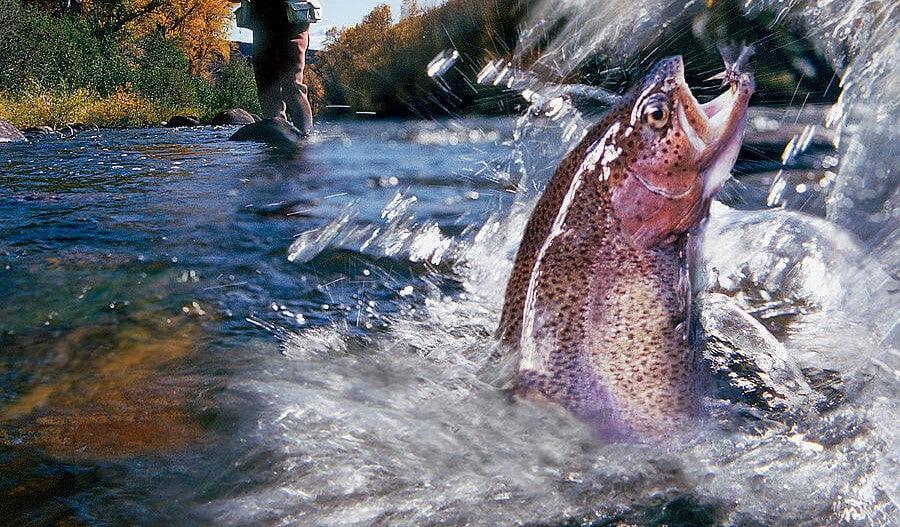
Trout Fishing: The Ultimate Guide to Techniques, Gear, and Success
Share
Trout Fishing: The Ultimate Guide to Techniques, Gear, and Success
Trout fishing is a beloved pastime for anglers worldwide. From serene mountain streams to expansive lakes, trout fishing offers not just an opportunity to catch a prized fish but also a chance to connect with nature. Whether you're targeting rainbow trout, brown trout, or brook trout, success lies in understanding their habits, choosing the right gear, and mastering proven techniques. In this guide, we'll walk you through everything you need to know to make your next trout fishing trip a memorable one.
Table of Contents
-
Understanding Trout Species
- Rainbow Trout
- Brown Trout
- Brook Trout
- Cutthroat Trout
-
Where to Fish for Trout
- Streams and Rivers
- Lakes and Reservoirs
- Seasonal Considerations
-
Essential Trout Fishing Gear
- Fishing Rods and Reels
- Lines and Leaders
- Hooks and Terminal Tackle
-
Best Baits for Trout Fishing
- Live Bait Options
- Artificial Lures
- Fly Fishing Patterns
-
Effective Techniques for Trout Fishing
- Spin Casting
- Fly Fishing Basics
- Drift Fishing and Bottom Bouncing
-
Tips for Catching More Trout
- Understanding Water Temperatures
- Locating Trout Habitats
- Adjusting Techniques for Weather
-
Regulations and Conservation
- Catch and Release Best Practices
- Fishing Licenses and Local Rules
-
Conclusion
Understanding Trout Species
Trout come in various species, each with unique behaviors, habitats, and feeding preferences. Recognizing these differences will help you tailor your approach for success.
Rainbow Trout
Rainbow trout are perhaps the most sought-after species due to their widespread distribution and striking appearance. Known for their vibrant pink stripe and acrobatic fights, they thrive in both still and moving waters.
Brown Trout
Brown trout are elusive and offer a challenge for anglers. They prefer cooler waters and are often found hiding near cover like fallen logs or deep pools.
Brook Trout
Brook trout are native to North America and thrive in cold, clear streams. Recognizable by their marbled pattern and red spots, they’re a favorite for fly fishing enthusiasts.
Cutthroat Trout
Cutthroat trout, named for the red slash along their throat, are a symbol of the wild. Found primarily in the western United States, they often inhabit remote, pristine waters.
Where to Fish for Trout
Finding the right location is key to successful trout fishing. Let’s break it down:
Streams and Rivers
Trout love cold, oxygen-rich streams. Look for them in deep pools, undercut banks, or riffles where food is abundant.
Lakes and Reservoirs
In still waters, trout tend to cruise along drop-offs or areas with submerged vegetation. Early morning and evening are prime times to fish lakes.
Seasonal Considerations
- Spring: Active feeding after the winter makes spring one of the best seasons for trout.
- Summer: Focus on cooler, deeper waters as temperatures rise.
- Fall: Trout become aggressive, making this a fantastic time to target larger specimens.
- Winter: Ice fishing for trout is an adventure for the dedicated angler.
Essential Trout Fishing Gear
Fishing Rods and Reels
- A lightweight spinning rod (6-7 feet) is versatile and effective for most trout fishing.
- Fly rods, typically 4-6 weight, are perfect for targeting trout with precision.
Lines and Leaders
- Use a light monofilament or fluorocarbon line (2-8 lb test) for clear water.
- Leaders and tippets should match the size of the trout and your bait or fly.
Hooks and Terminal Tackle
- Opt for small hooks (sizes 10-18) to suit the trout’s smaller mouths.
- Split shot sinkers or small bobbers can help present your bait at the right depth.
Best Baits for Trout Fishing
Live Bait Options
- Worms: A classic choice, worms are irresistible to trout in streams and lakes.
- Minnows: Effective for larger trout, especially in cold-water reservoirs.
- Insects: Grasshoppers and crickets mimic the trout’s natural prey.
Artificial Lures
- Spinners and Spoons: Great for spin casting, these lures mimic small baitfish.
- Crankbaits: Use these for larger, aggressive trout in lakes.
Fly Fishing Patterns
- Dry Flies: Ideal for surface feeding trout during a hatch.
- Nymphs: Effective year-round as they mimic subsurface insects.
- Streamers: Perfect for imitating small baitfish or leeches.
Effective Techniques for Trout Fishing
Spin Casting
A reliable method for beginners and pros alike. Cast upstream and retrieve slowly, allowing your bait to drift naturally.
Fly Fishing Basics
Fly fishing offers precision and an unparalleled connection with nature. Mastering casting techniques and fly selection is key.
Drift Fishing and Bottom Bouncing
Letting your bait drift naturally in the current mimics food sources and can entice even wary trout.
Tips for Catching More Trout
- Understand Water Temperatures: Trout prefer water temperatures between 50-60°F. Adjust your fishing depth accordingly.
- Locate Trout Habitats: Look for underwater structures, vegetation, and areas with shade or moving water.
- Adjust Techniques for Weather: Overcast days often lead to more active feeding, while sunny days may require deeper presentations.
Regulations and Conservation
Trout fishing is about more than just the catch—it's about preserving our waters for future generations. Follow local regulations, practice catch and release where appropriate, and always handle fish with care.
Conclusion
Trout fishing is an art that combines skill, patience, and a deep appreciation for the natural world. By understanding the species, choosing the right gear, and employing effective techniques, you can elevate your fishing experience. Whether you’re a seasoned angler or just starting out, there’s always something new to learn in the pursuit of trout.
